Jing-Mei Detention Center and the White Terror
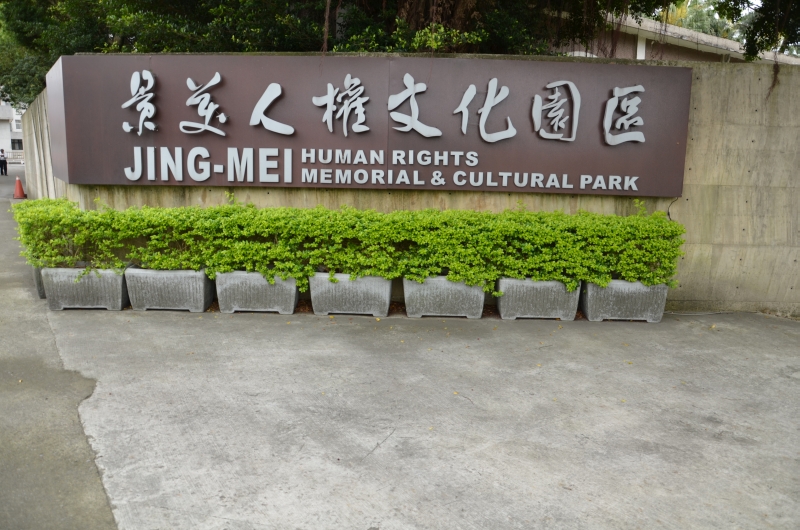
Sign Outside the Park
I’ve had a brochure for the Jing-Mei Human Rights Memorial and Cultural Park in my knapsack for a long time. I just never had the opportunity to go check it out until recently. Despite its size, the park wasn’t the easiest place in the world to find. There is a handy little map in the brochure, but that didn’t help much.
The jumping off point for going to the park is the Dapinglin MRT station on the green line. From there, it is about a 1.5 kilometer walk depending on the route you choose. It felt longer than that to me probably because I didn’t know where I was going. It’s also possible to get from the MRT station to the park by bus (at least according to the brochure), but that would probably be more trouble than it’s worth. Unfortunately, the park is just far enough away from the MRT station that it doesn’t show up on the MRT station neighborhood maps. Still, with the brochure (which you can pick up at many tourist information desks around Taipei) or with your own Taipei city map, you can probably find it.
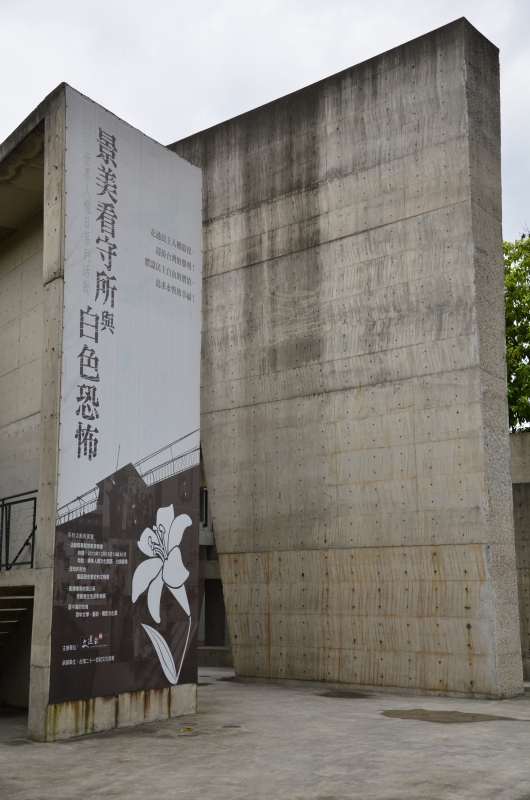
Entrance to the Park
The park’s address is 131 Fuxing Road, Xindian City. I took Exit 1 out of the Dapingling MRT station and then headed north on Beixin Rd. Then I turned left (west) on Fuxing Road and just kept walking until I found the place. Beixin actually goes over Fuxing on a bridge and there is no easy way to get down to Fuxing. I had to cross over to the other side and then just on the right, I spotted a spiral metal staircase that brought me down to Fuxing. Of course, I didn’t really know that it was Fuxing. I was just guessing. All I can say is that if you cross the bridge over the deep river valley, you’ve gone too far. Fuxing is the main road just before the river.
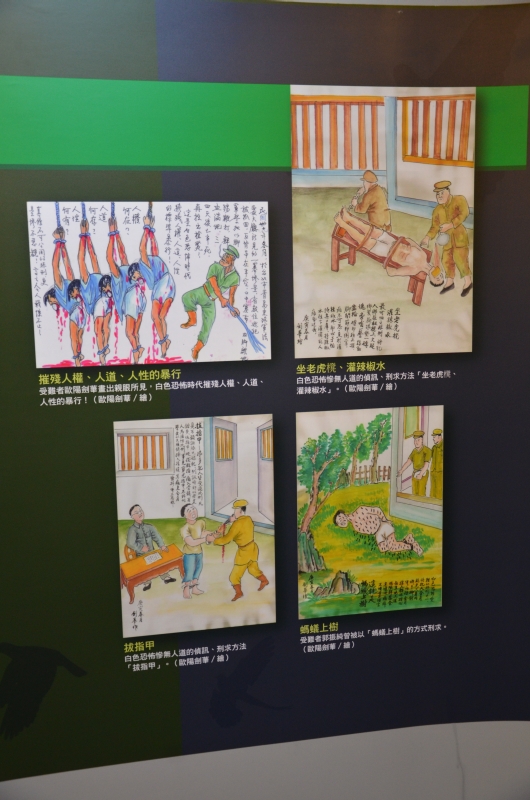
Exhibit inside the Park
If you have your camera out as you walk along Fuxing, you might want to keep your picture snapping to a minimum as you will be passing a series of military installations with some mean-looking soldiers in full combat gear standing guard. The park is on the left (south) side of Fuxing, and to make it even more complicated, it is tucked away down a small lane that runs parallel to Fuxing as it starts to rise to cross over another river. I saw one large sign for this park near the MRT station (for drivers), but I didn’t see any other signs pointing to the park. The park organizers really should put up a small sign or two at least at the last intersection to show that you are heading in the right direction. If I hadn’t been very familiar with the complicated streets of Taipei, I probably would have given up before I found it. It just didn’t seem like the kind of place where this park would be located. And I instinctively expect to see more and more signs as I get closer to a place. In Taiwan, the pattern is the opposite I’ve found. The closer you get to your destination, the less signs you’ll find. And then when you are right beside it, the signs will disappear altogether. So, oddly, the less signs you see, the closer you probably are to where you want to go.
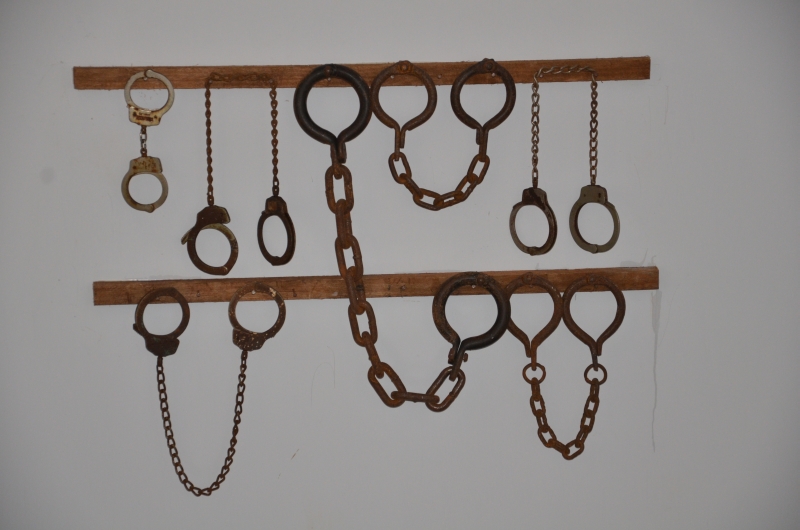
Shackles at Jing-Mei
Even when I was standing practically in front of the park, I wasn’t sure I was in the right place. There were high slabs of concrete on all sides and this concrete gave the place a foreboding quality. Also, I had passed so many soldiers that I was a bit wary. I didn’t want to go blundering into a top-secret military post with my camera in hand and dumb tourist look on my face. However, once I had timidly walked until I was directly in front of the place, then on my left, I saw a big sign for the park. The problem was that it was completely hidden to anyone coming from the other direction.
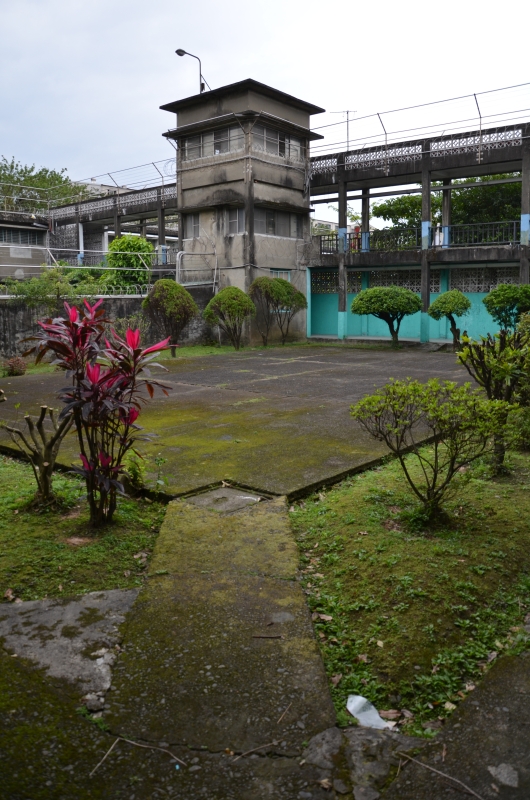
Exercise Yard and Guard Tower
I didn’t know if I could just walk into the park or if I had to buy a ticket or go on a group tour. To be honest, I had no idea what the park consisted of. So I adopted my usual strategy – I just walked inside and waited to see if someone was going to yell at me or stop me. A security guard did, in fact, stop me, but he just wanted to make sure that I had a copy of the English brochure. As it turned out, there was no actual entrance to the park. There was no gate or door that you had to pass through and there was no entrance fee. You simply walked among these high concrete slabs until you found yourself inside a large complex of buildings. I don’t know if the designers of the park had this in mind, but the concrete slabs contributed to the ominous feeling of the place – fitting for a place where so many were imprisoned, tortured, and killed.
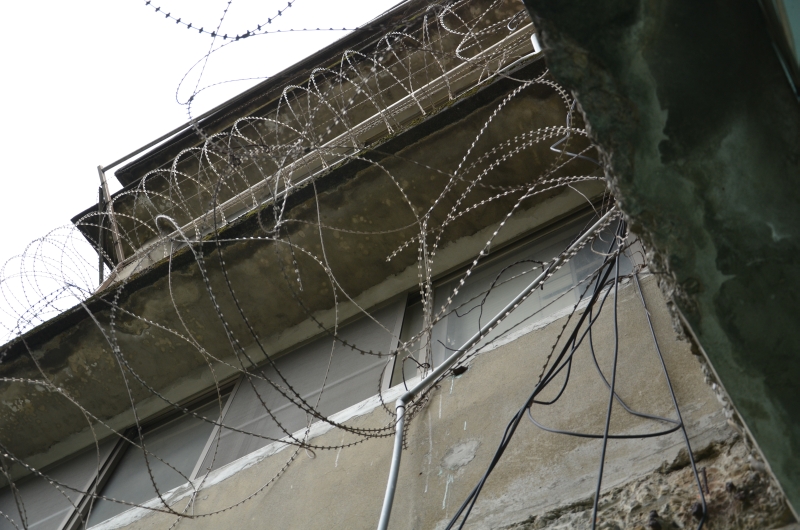
Barbed Wire
From the brochure:
“After 1968, the Jing-Mei facility served as the combined site for interrogation, detention, and military court trials conducted by the Taiwan Garrison Command in the prosecution of political prisoners until the martial law decree, imposed by the Chinese Nationalist Part (Kuomintang or KMT) government on May 19, 1947, was lifted on July 15, 1987.”
Essentially, the Jing-Mei facility served as a transit station for political prisoners during the White Terror. The brochure has this to say about this period of Taiwan’s history:
“During the ‘White Terror’ conducted by the then KMT government during nearly four decades of martial law rule, thousands of Taiwan citizens were charged with being ‘Chinese Communist bandit spies’ or ‘seditionists.’ Over 29,000 such cases were prosecuted by military courts during the martial law period with between three to four thousand executed and up to 140,000 victimized through prison sentences of varying severity and other sanctions.”
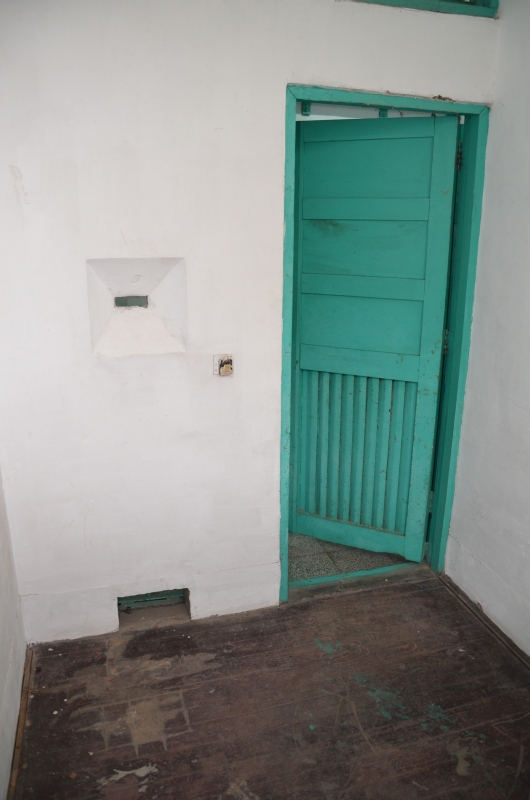
Inside a Typical Cell
The first buildings I encountered were the barracks that once served as dormitories for the military law students and their instructors. Later, they housed military police. There were six barracks, and they now contain exhibits illustrating the history of the Jing-Mei facility. Nearly all of it – the signs, photo captions, labels, and movies – was in Chinese, but it was still interesting, and with a thorough reading of the detailed brochure, it was easy to figure out what it was all about. In one building, there was even a small cell with wooden bars. You can go inside the cell and then see yourself on a video monitor. It gives you an eerie sense of what it was to be a prisoner. Intellectuals and artists were also imprisoned during the White Terror, and one building was dedicated to them. You can see portions of old movies from this era. The other smaller buildings were the old courtrooms and special jail cells for high-ranking prisoners.
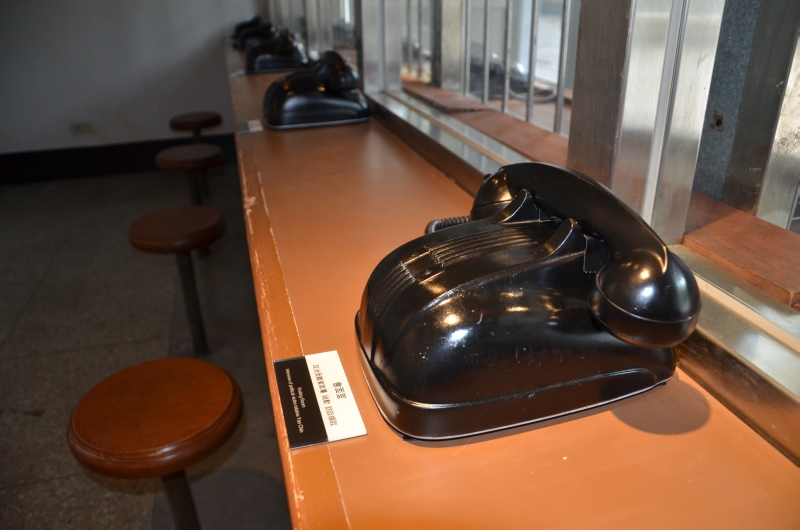
Visitor Area and Telephones
Perhaps the most interesting part of the park is the large detention center at the back. This is where most of the prisoners were held, and many rooms have been restored to look exactly as they did when the prison was in use. Here, there is lots of information in English, and it is fascinating to wander amongst all the common areas. There is a room where prisoners met with their lawyers, a doctor’s and dentist’s office, and a room where prisoners could speak with visitors by phone through thick glass. Next to this room is a surveillance center where all the conversations were monitored and recorded on reel-to-reel tapes. There is a re-creation of the old prison store where prisoners could buy simple necessities such as toothpaste and canned food. Money for this store was earned by working in the prison’s laundry room and ironing and sewing room.
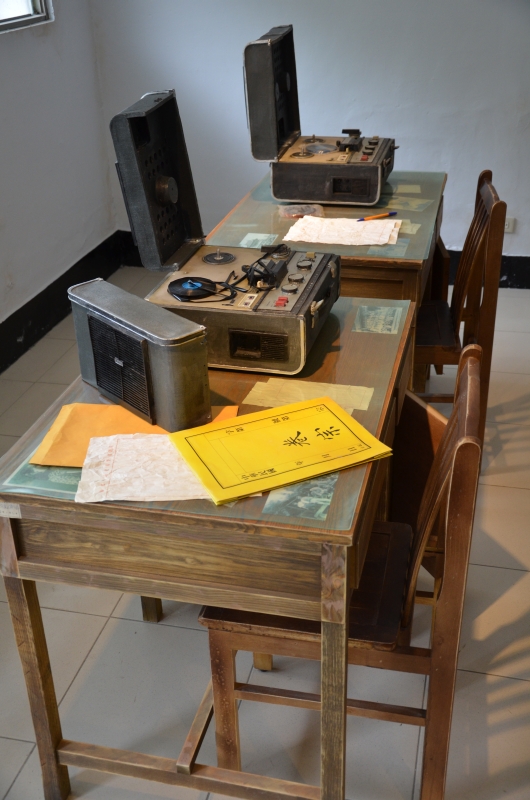
Recording and Surveillance Room
You can also visit the prison cells and the exercise yard. Here, you get an inkling of what it must feel like to be a prisoner. It’s hard not to feel a bit panicked when you look up at the high concrete walls, the barbed wire, and the guard towers. The cells themselves were quite small and had a peephole in the wall for the guards to look in and a slot at the bottom where trays of food could be passed inside. The cells would have been cramped for one person, but I believe 3-4 were kept in the smaller cells and 6-10 in the larger ones.
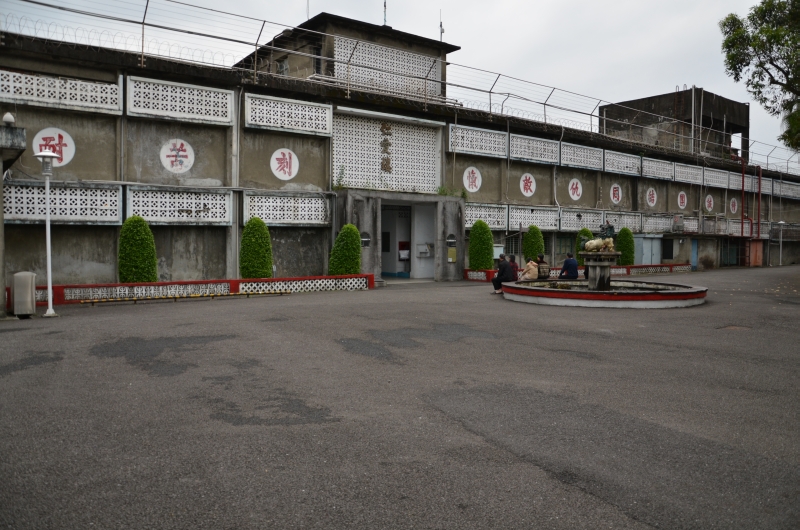
Front Wall of the Prison
From there, I wandered through the rest of the prison and took in the laundry room and the sewing room. Other large rooms here held various exhibits, including one on the prison on Green Island. Another exhibit contained ten monitors with headphones where you can watch a short documentary. It looked quite interesting, but this was also only in Chinese.
All-in-all the park is well-worth a visit. It might take a bit of an effort finding the place, but you can easily spend an afternoon there. There are lots of public bathrooms spread about and there are vending machines for cold drinks. There are even some eager young guides who conduct regular tours. These tours are in Chinese, but the guides also speak English and will translate the most important parts for you and answer your questions in English.
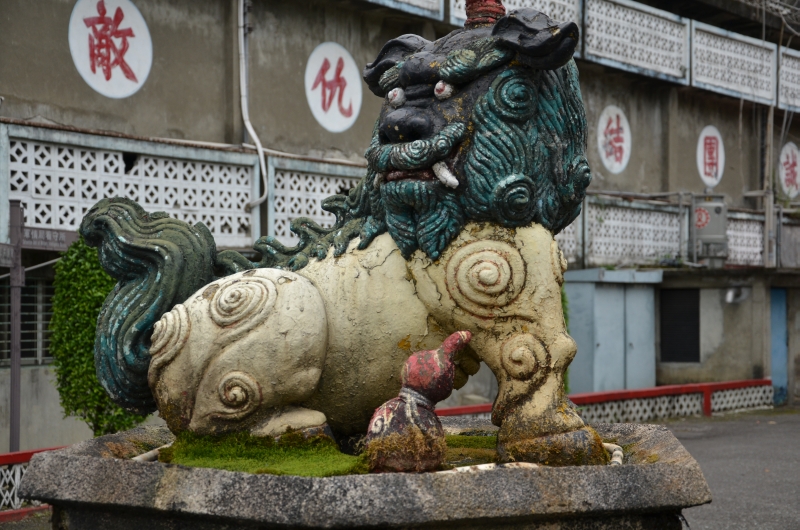
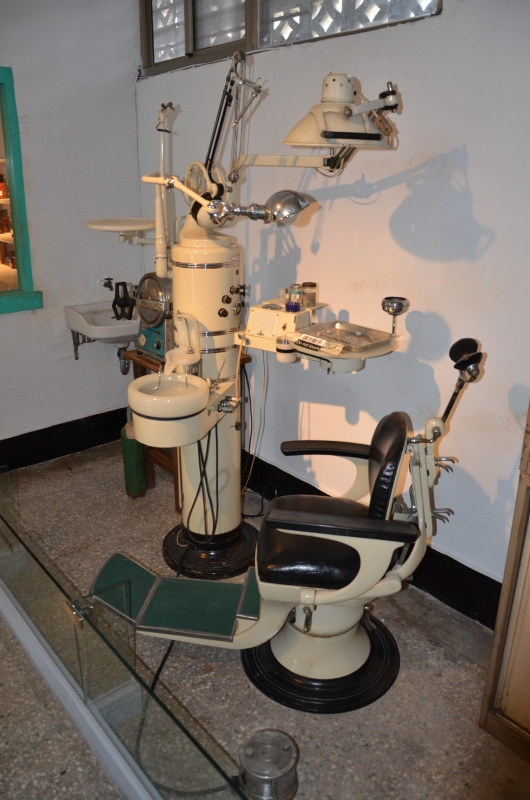
Dentist Chair
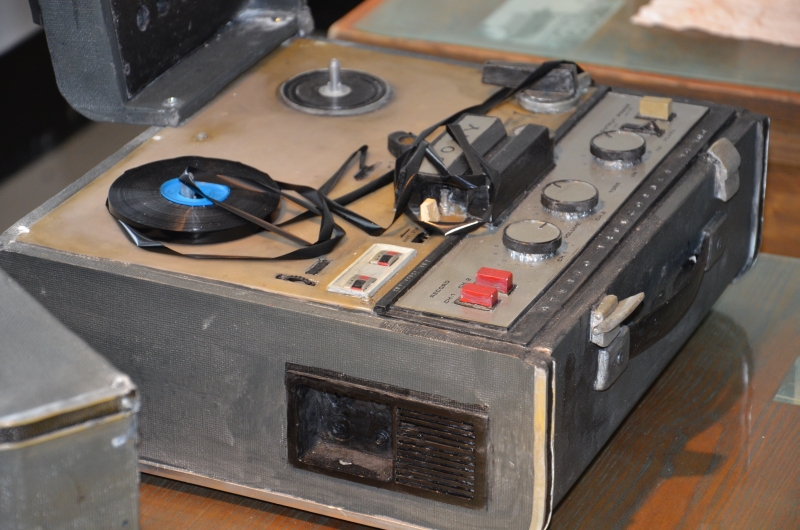
Tape Recorder
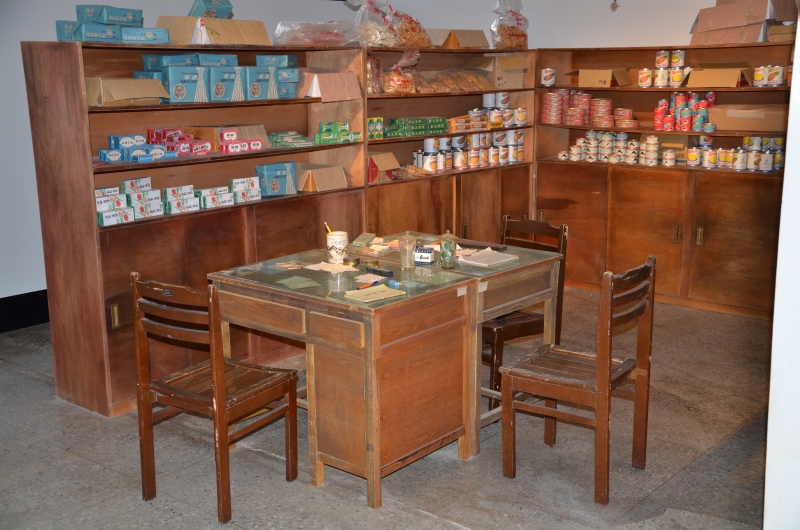
Prison Store
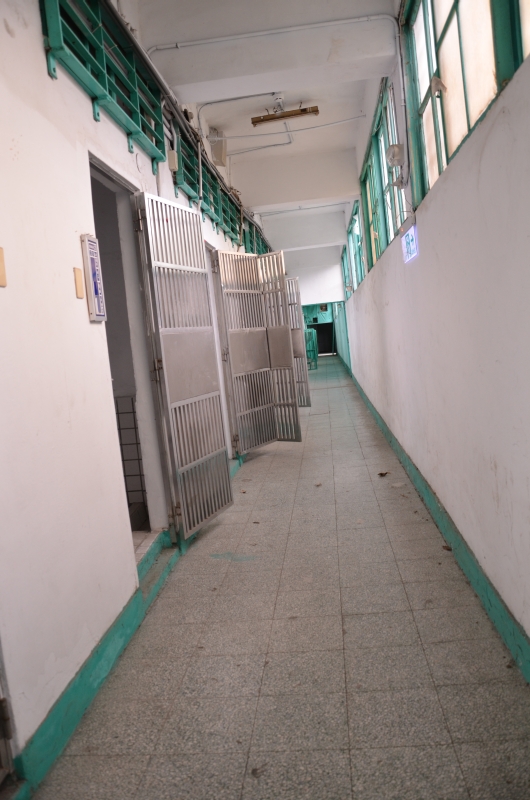
Prison Cells
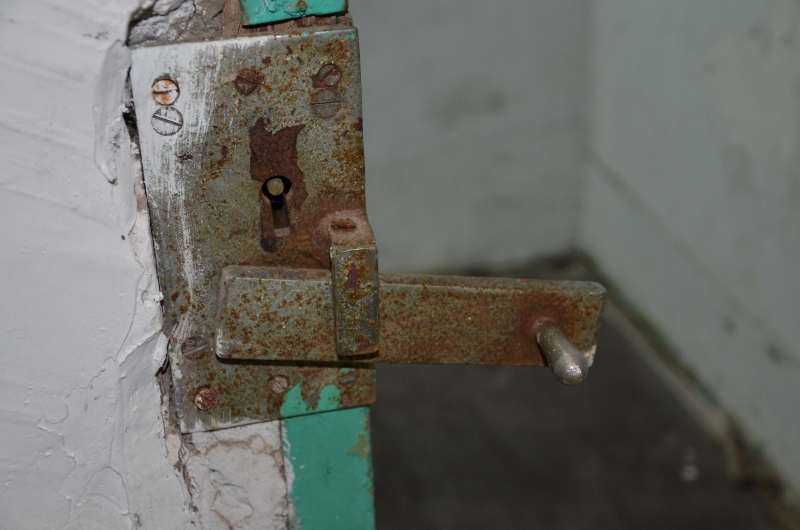
Cell Door Latch
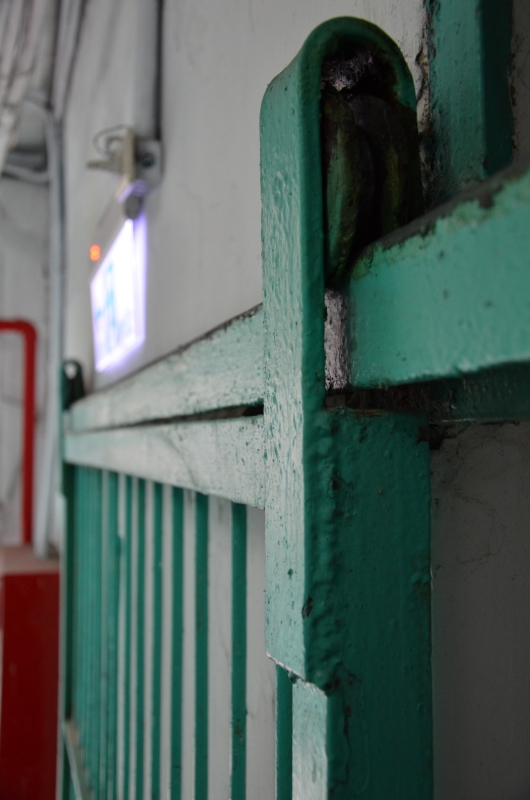
Sliding Prison Gate

Entrance to Jing-Mei Human Rights Memorial and Cultural Park
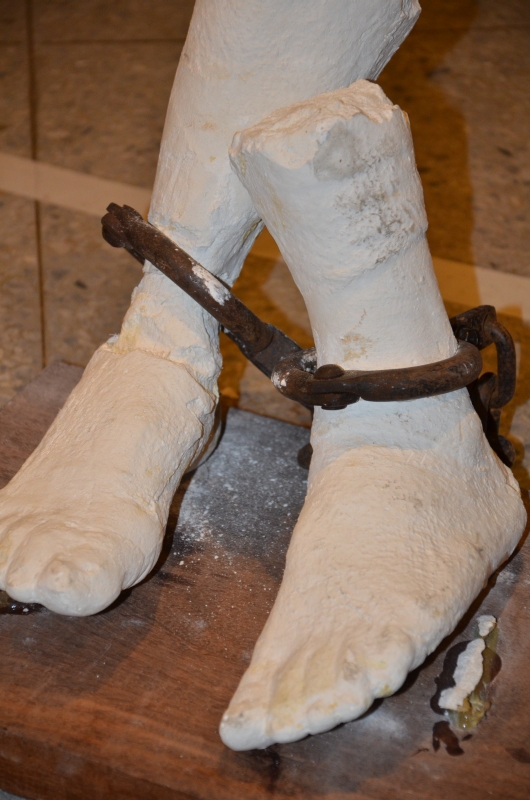
Shackles
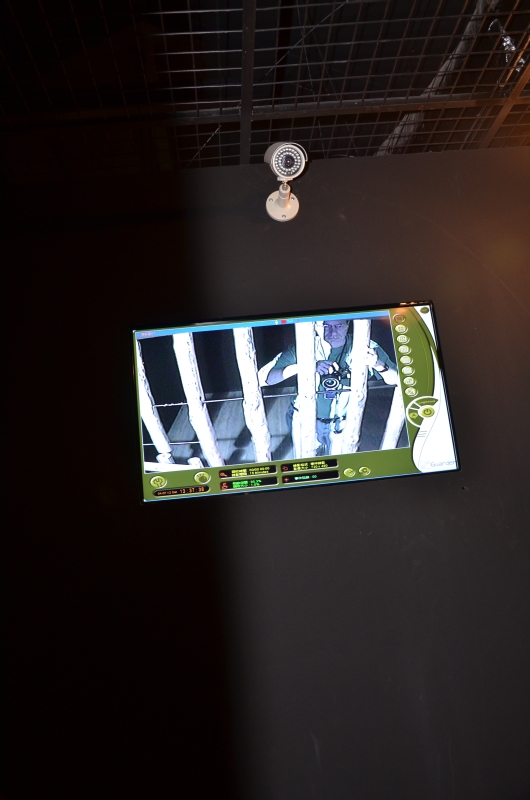
Me in Prison
Tags: Jing Mei, MRT, Taipei, Taiwan Garrison Command, White Terror

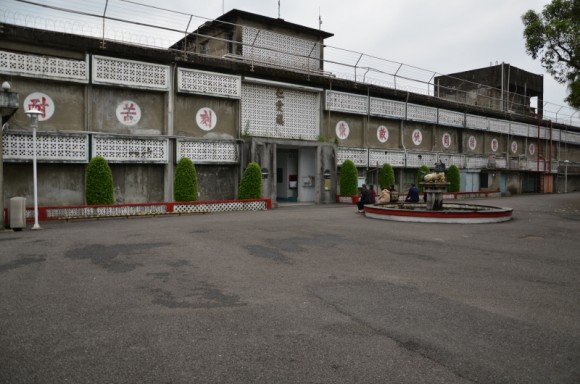
Good of you to go there! Were there any other visitors? It strikes me that no one is really doing much to promote this place. Teachers ought to take their students! I wrote about this some time ago:
http://www.intaiwan.de/2010/01/31/jingmei-prison-shows-how-taiwan-does-not-deal-with-its-past/
You might also like to take a look at my pics from Green Island’s prison memorial:
https://www.facebook.com/media/set/?set=a.10150202626858295.306992.234843808294&type=3
No, Klaus, there weren’t many people there when I visited. I remember a couple of people but not many – certainly not many considering the size of the place. I didn’t know much about it other than what I read in the brochure. As I said above, it wasn’t very easy to track down, and I was surprised at how large the place was and how many exhibits there were. It’s definitely worth a visit.
Thank you very much for posting this. I will definitely go next time I’m in Taiwan.
Ray